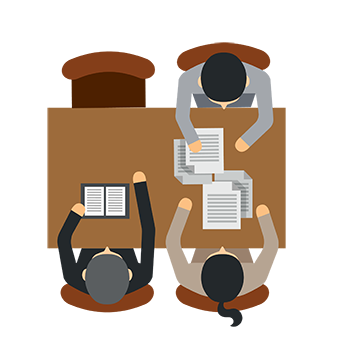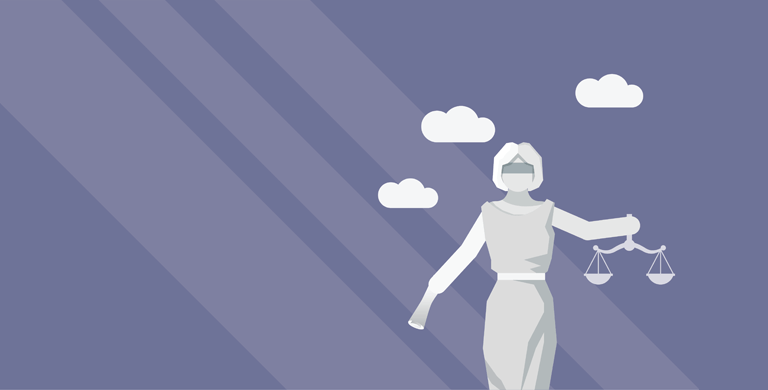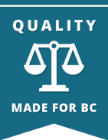What does it mean?
Increasing access to justice is a major goal for the courts. But what does access to justice even mean and how can it be improved? Here are some ways to think of it:
 Physical Access: On a basic level access to justice means being physically able to go to court. But open courts mean more than just being able to enter into a building. Open courts mean that you can see first-hand how your rights and freedoms are protected. It also means that justice is accountable to the public and cannot be hidden from the people.
Physical Access: On a basic level access to justice means being physically able to go to court. But open courts mean more than just being able to enter into a building. Open courts mean that you can see first-hand how your rights and freedoms are protected. It also means that justice is accountable to the public and cannot be hidden from the people.
You have the right to visit courts and observe them in action. With very few exceptions, all courts are open to the public. You are welcome to sit in a reserved space called the public gallery and watch what happens. You can pass a very interesting day this way and learn a lot about how our society operates.
Financial Access: Access to Justice can also mean ensuring everyone has the ability to use the courts if they need to, regardless of their financial circumstances. Unfortunately, going to court has become so expensive that not everyone can afford it. It can cost a lot of money to hire a lawyer, file court documents and hire experts. Some ways to increase access to justice in this sense include:
- making available legal aid (free lawyers),
- empowering people to represent themselves (“self-represented litigants”), and
- reducing the cost of moving through the justice system by waiving court fees.
Access through knowledge: The justice system isn’t only very expensive, it is also complicated and hard to understand. Our legal system is based off of very old traditions and procedures and it takes lawyers a lot of specialized training to understand. It is no wonder it can be difficult for people with no formal legal training! Access to justice can be increased through:
it is also complicated and hard to understand. Our legal system is based off of very old traditions and procedures and it takes lawyers a lot of specialized training to understand. It is no wonder it can be difficult for people with no formal legal training! Access to justice can be increased through:
- simplifying legal language,
- providing clear instructions on court forms, and
- funding public legal education.
Eliminating Injustice : Access to justice could also be through the elimination of injustice. Lawyer, judges, and you can do this by:
- calling attention to injustice where you see it,
- advocating for reform, and
- voting (once you are 18), volunteering, and making changes in your own life to support equality.
What does access to justice mean for you?
Legal Aid
Legal Aid BC is an organization that provides assistance to people who cannot afford a lawyer. When they can, Legal Aid provides a free lawyer to represent people who need one. But not everyone who needs a lawyer qualifies.
Here are the types of cases when Legal Aid funding could be available
- Criminal law: legal aid will be provided to someone accused of a crime when jail is a possible punishment.
- Family law: legal aid is usually only available in family cases where there has been family violence or children have been removed by the government.
- Civil law: legal aid is rarely provided in civil cases.
Legal Aid BC also funds "duty counsel". Duty counsel are lawyers who work out of a courthouse and can provide free, on the spot advice. They may represent clients in short matters.
People may also get free legal advice from lawyers who are volunteering their time to help. This is called ProBono work.
Self-represented litigants
More and more people are representing themselves in court especially in civil and family cases. They are called self-represented litigants. Self-represented litigants face many challenges. Many are unfamiliar with how to push their issue forward or effectively advocate for themselves. This has led to more stress on the court system and on the self-represented litigants themselves.
What is Alternative Dispute Resolution
There are many ways to sort out disagreements, and they don’t all involve courts. Most conflicts are not resolved in a trial. Even if people start a lawsuit in court, they have up until a judge makes a final decision to come to an agreement on their own. It is usually a more flexible, private, and less expensive way to resolve your dispute. Alternative Dispute Resolution describes different ways people can come to a resolution without going to trial. Examples include:
- Negotiation: where people work out a suitable arrangement on their own or with the help of lawyers
- Mediation: where a neutral third-party helps people come to an agreement but does not make a decision for them
- Arbitration: where people hire a professional who makes a decision for them
 The Courts are already overflowing and backed up. If every case went to trial it would be total gridlock. The Courts encourage parties to resolve their own issues where possible. They do this by often ordering the party who loses the case to pay the legal costs of the other party. Thereby incentivizing people to settle their cases so they won’t have to pay costly legal fees. They also provide opportunities for parties to come to an agreement through mandatory mediation such as Family Case Conferences. This is where a judge will act as a mediator and work with the parties to see if they can come to an agreement. Similarly, in Small Claims Court, most parties must attend a judge-led mediation called a “settlement conference”.
The Courts are already overflowing and backed up. If every case went to trial it would be total gridlock. The Courts encourage parties to resolve their own issues where possible. They do this by often ordering the party who loses the case to pay the legal costs of the other party. Thereby incentivizing people to settle their cases so they won’t have to pay costly legal fees. They also provide opportunities for parties to come to an agreement through mandatory mediation such as Family Case Conferences. This is where a judge will act as a mediator and work with the parties to see if they can come to an agreement. Similarly, in Small Claims Court, most parties must attend a judge-led mediation called a “settlement conference”.





